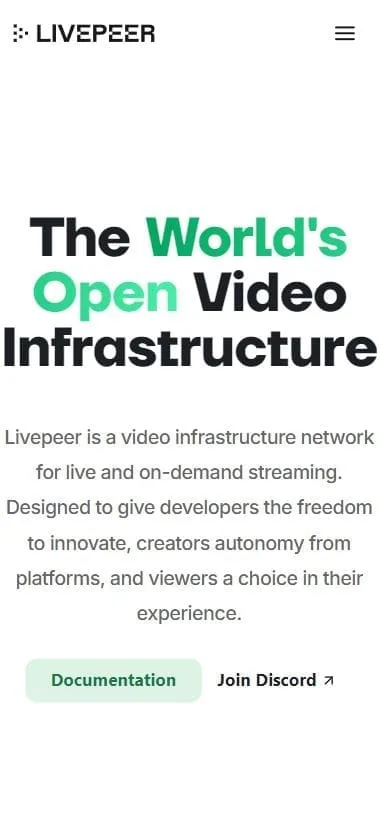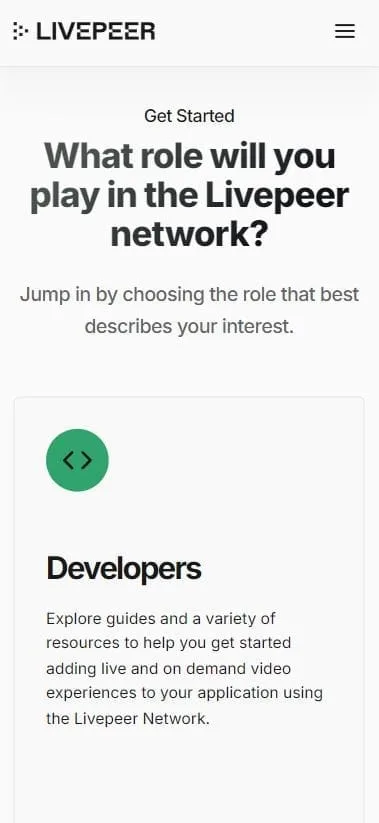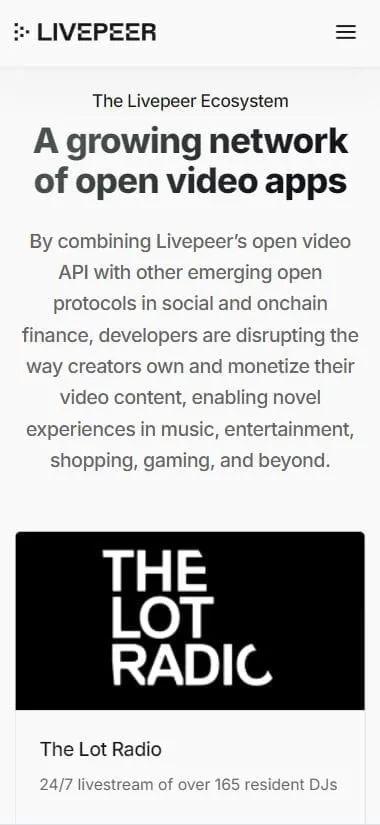What Is Livepeer? (LPT)
Livepeer is a decentralized video streaming and transcoding protocol built on the Ethereum blockchain. Unlike traditional video streaming platforms like YouTube or Vimeo, Livepeer does not host or distribute video content. Instead, it focuses on the transcoding aspect, which is the process of converting and reformatting video files into different formats suitable for various devices and networks.
Livepeer enables video broadcasters to use distributed computing resources to efficiently transcode their video content. This decentralization of the transcoding process helps reduce the costs and inefficiencies that come with traditional centralized video services. At the heart of this ecosystem is the Livepeer Token (LPT), which helps secure the network, incentivizes participants, and coordinates the work of those involved in the video transcoding process.

Why Is Livepeer Important?
Video streaming is a massive part of internet bandwidth usage, with reports suggesting that video traffic accounts for as much as 80% of global internet usage. The process of video transcoding (converting raw video into formats that can be played across devices) is one of the most expensive and resource-intensive aspects of video streaming.
Livepeer seeks to disrupt this market by creating a decentralized network where anyone with computing power can participate in the transcoding process, reducing costs and increasing the efficiency of video delivery. This decentralized approach allows broadcasters to access a global pool of processing power without the need for expensive infrastructure.
Key Components of the Livepeer Network
The Livepeer network operates on a decentralized architecture, where participants can take on one of two key roles: Orchestrators and Delegators. These roles work together to enable efficient and secure video transcoding.
1. Orchestrators
- Orchestrators are participants who have sufficient computing power to transcode and distribute video. These participants are responsible for performing the heavy lifting of the video transcoding process.
- Orchestrators must stake Livepeer Tokens (LPT) as collateral to participate in the network. This staking incentivizes them to perform quality work and ensures the security and reliability of the video transcoding service.
- Orchestrators are compensated with fees from broadcasters, paid in Ether (ETH) or stablecoins like DAI. The amount an orchestrator earns is proportional to the amount of LPT they have staked and the quality of their work.
2. Delegators
- Delegators are participants who delegate their LPT to orchestrators. Delegators don’t need to run the transcoding hardware themselves but can still earn rewards by staking their tokens with trusted orchestrators.
- Delegators choose orchestrators based on their reputation, performance, and the quality of work they provide. In return for their delegated stake, delegators earn a portion of the fees generated by orchestrators.
- Delegators help ensure that orchestrators are incentivized to provide high-quality, reliable services.
3. Broadcasting and Transcoding
- Broadcasters (like app developers, video content creators, or live event organizers) use the Livepeer protocol to broadcast video content. They don’t need to worry about transcoding or distributing the video; Livepeer handles those tasks.
- The orchestrators process the videos and convert them into various formats (e.g., for mobile, desktop, or smart TV). This transcoding process ensures that the video can be viewed across a wide range of devices and platforms.
4. Livepeer Token (LPT)
- The Livepeer Token (LPT) is used to stake on the network. Both orchestrators and delegators must stake LPT to participate in the network and secure their role in the transcoding process.
- The LPT token is also used to coordinate the work within the ecosystem. Orchestrators who perform high-quality work receive a larger share of the fees paid by broadcasters, and delegators are rewarded based on the performance of the orchestrators they stake with.
- LPT is not used as a payment token for video services. Instead, broadcasters pay for services in ETH or stablecoins like DAI, while the LPT token acts as a mechanism to secure the network and ensure participants act honestly.
How Does Livepeer Work?
The Livepeer network is structured to be decentralized, efficient, and cost-effective. Here’s how the system operates in practice:
- Video Broadcast: A broadcaster (e.g., an app developer or a content creator) wants to stream video content, such as a live event or on-demand video. They initiate a request through a decentralized application built on the Livepeer protocol.
- Orchestrator Participation: Orchestrators, who have staked LPT and dedicated computing resources, receive the video stream. They perform the video transcoding process—converting the video to multiple formats (resolution, device-specific encoding) to ensure it’s compatible with different devices and networks.
- Delegator Support: Delegators can delegate their LPT to trustworthy orchestrators. They earn a portion of the rewards based on the amount they stake with each orchestrator and the quality of the orchestrator’s performance.
- Fee Distribution: After the video transcoding work is completed, broadcasters pay fees to orchestrators (and indirectly to delegators) for the work done. The fees are usually paid in ETH or stablecoins like DAI.
- Rewards and Staking: Orchestrators earn rewards based on their performance and the amount of LPT staked on their work. They also receive a portion of new LPT minted every 5760 Ethereum blocks, which are distributed as part of a “round” within the protocol.
Why Use Livepeer?
1. Decentralized Infrastructure
- Livepeer leverages a decentralized network to distribute video transcoding and broadcasting. This ensures that the process is trustless and that no single entity controls the video streaming infrastructure.
2. Cost Efficiency
- The Livepeer network utilizes excess computing power from various participants (orchestrators) to transcode video at a lower cost than traditional centralized platforms. This makes the video broadcasting process more affordable, especially for small developers or content creators.
3. Scalability
- Livepeer can scale by leveraging the vast amount of distributed computing resources available in the network. As more orchestrators and delegators join, the network’s capacity to handle larger and more complex video streaming requests increases, without the need for traditional infrastructure expansion.
4. Access to Video Streaming
- By reducing the barriers to entry (in terms of cost, infrastructure, and technical expertise), Livepeer enables more individuals and organizations to broadcast and transcode video content. This opens up opportunities for new video applications, live streaming, and decentralized media.
5. Tokenized Incentives
- The system of staking and delegation using LPT ensures that participants are incentivized to provide high-quality services. Orchestrators are motivated to perform well, and delegators can earn rewards without needing to run their own transcoding nodes.
Potential Risks
- Smart Contract Risk: Like all decentralized platforms, Livepeer operates on smart contracts, which could be vulnerable to bugs or exploits if not properly audited.
- Network Participation: The success of the Livepeer network relies on the availability of orchestrators with sufficient computing power. If the number of active orchestrators decreases, the network may struggle to handle large-scale video transcoding.
- Token Volatility: The value of LPT can be volatile, as with any cryptocurrency. If the price of LPT drops significantly, it could affect the incentives for orchestrators and delegators.
- Competition: While Livepeer offers a unique decentralized alternative, it competes with centralized video hosting and transcoding solutions that have the benefit of established infrastructure and larger user bases.























Reviews
There are no reviews yet.